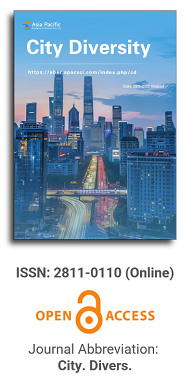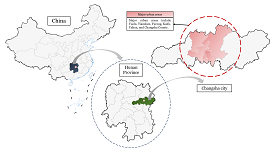
Asia Pacific Academy of Science Pte. Ltd. (APACSCI) specializes in international journal publishing. APACSCI adopts the open access publishing model and provides an important communication bridge for academic groups whose interest fields include engineering, technology, medicine, computer, mathematics, agriculture and forestry, and environment.

As China's pillar industry, the property market has suffered a considerable impact in recent years, with a decline in turnover and many developers at risk of bankruptcy. As one of the most concerned factors for stakeholders, housing prices need to be predicted more objectively and accurately to minimize decision-making errors by developers and consumers. Many prediction models in recent years have been unfriendly to consumers due to technical difficulties, high data demand, and varying factors affecting house prices in different regions. A uniform model across the country cannot capture local differences accurately, so this study compares and analyses the fitting effects of multiple machine learning models using February 2024 new building data in Changsha as an example, aiming to provide consumers with a simple and practical reference for prediction methods. The modeling exploration applies several regression techniques based on machine learning algorithms, such as Stepwise regression, Robust regression, Lasso regression, Ridge regression, Ordinary Least Squares (OLS) regression, Extreme Gradient Boosted regression (XGBoost), and Random Forest (RF) regression. These algorithms are used to construct forecasting models, and the best-performing model is selected by conducting a comparative analysis of the forecasting errors obtained between these models. The research found that machine learning is a practical approach to property price prediction, with least squares regression and Lasso regression providing relatively more convincing results.
Research on the transformation and upgrading of historical and cultural blocks from the perspective of urban regeneration—Take yongqingfang in Guangzhou as an example
Vol 3, Issue 1, 2022
Download PDF
Abstract
With the rapid development of urbanization, the development and construction of new towns and new areas has become the main direction of urban expansion. On the contrary, the development of the old urban areas has been neglected and gradually fell into recession. In the new era, how to promote the new vitality of the old city and realize the double wheel drive between the old city and the new city has become an urgent research topic. Enning Road, located in the old urban area of Liwan, guangzhou, gathers the essence of Xiguan arcade building, but once became a typical example of the decline of old blocks. Through micro transformation, it not only protects the authenticity of the historical environment, but also promotes the development of the cultural tourism industry, realizes the regeneration of the historical and cultural blocks, and walks out a unique road to the revitalization of the historical and cultural blocks. Based on this analysis, the article puts forward policy suggestions to further improve the revitalization of historical and cultural blocks from the aspects of establishing a diversified participation mechanism, correctly handling the relationship between the protection and development of historical and cultural relics, and preventing violations of consumer rights and public interests.
Keywords
References
- Gillies J, mittelbach F. Urban redevelopment: Some aspects of federal legislation for rebuilding cities in the United States. The Town Planning Review, 1957; 27(4): 231–245.
- Miller, james M. New life for cities around the world: International handbook on urban renewal. New York: Books International, 1959.
- Wu L. Old city of Beijing and juer Hutong. Beijing: China Construction Industry Press, 1994
- Yang J, Wu W. Modern urban renewal. Nanjing: Southeast University Press, 1999
- Yang J. Towards sustainable urban renewal -- Rational Thinking Based on value orientation and complex system. Urban planning 2018; (6): 68–78
- Jiang W, Chen K, Ma X. Research on spatial production of old city reconstruction in China -- a case study of Xintiandi, shanghai. Urban development research 2011; (10): 84–89
- Wang J, Jiang Y. Analysis on the transformation of historical and cultural blocks based on Chengdu Kuanzhai alley. Ecological economy, 2012; (6): 196–199
- Lv B. Sustainable regeneration practice of nanluogu lane based on Community -- a model for the protection and development of old city historical blocks. Beijing Planning and construction 2012; (6): 14–20
- Roberts P, sykes H & Granger R. Urban regeneration. SAGE Publications Ltd,2017.
- Smith N. Toward a theory of gentrification: A back to the city movement by capital, not people. Journal of the American Planning Association 1979; 45(4):538–548.
- Li C. The development and limitation of rent gap theory. Journal of land science of Taiwan 2000; (1): 67–89
- Moskowitz P E. How to kill a city: Gentrification, inequality and the fight for the neighborhood. Bold Type Books, 2017.
- Chen Wen, he Shan 183 households jointly opposed the plan for the protection and development of Guangzhou Enning road [n]. New express, 2010-2-5
- Wei Q. Vanke Yongqing Square Reconstruction: the cost can be recovered only after investing 10000 yuan per square meter for 12 years. Daily economic news, october 19, 2017.
Supporting Agencies
Copyright (c) 2022 Laisheng Yin

This work is licensed under a Creative Commons Attribution 4.0 International License.

This site is licensed under a Creative Commons Attribution 4.0 International License (CC BY 4.0).

Prof. Mehmet Cetin
Kastamonu University,
Turkey
Polish Scientific Bibliography

